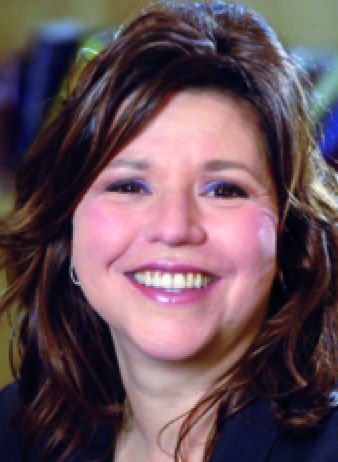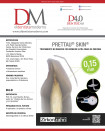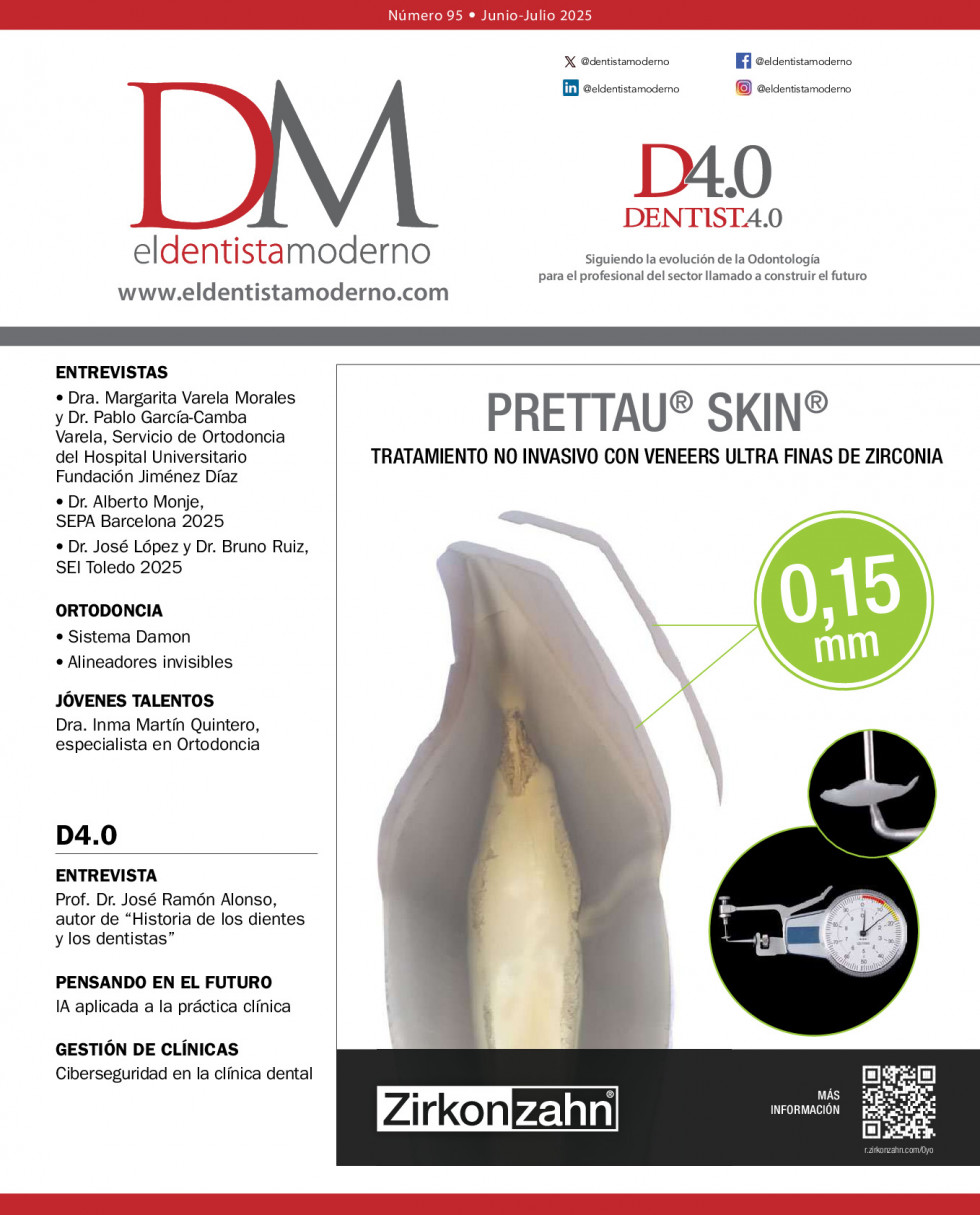Revista
An innovative treatment strategy for the management of the elderly population
 Josephine Lomagino-Cheung, Doctor of Dental Surgery, New York University
Josephine Lomagino-Cheung, Doctor of Dental Surgery, New York University
In the present day, there are multiple problems that prevent the elderly from achieving optimal dental health. Such problems include the inability to visit a dental office stemming from medical issues and finding a dentist willing to treat them. The oral health of the elderly is already poor due to gum disease, poor diet, and side effects of the various medications they take. Their incapacity to see the doctor renders them helpless to many oral health issues. Most have large fillings, loss of tooth support, discolored teeth, and receded gums. Although a large population over 65 has most or some of their natural teeth, the teeth of the elderly are thinner and more prone to breakage.
However, researchers have invented a device called Computer Aided Design/Computer Aided Manufacture (CAD/CAM) that takes care of the time restraints that elderly patients encounter when they must have multiple visits to the doctor to fix their teeth. By using CAD/CAM, dentists can perform complex treatments originally completed in multiple visits in only one visits.
Thus, this new technology eliminates the need for an impression, temporary restoration, and labor-intensive laboratory work. In essence, CAD/CAM will contribute to the improvement to the health and quality of life of the typical aging citizen.
The benefits of CAD-CAM Technologies
In the past, the elderly adults were relatively small in number and mainly edentulous. Dentistry was limited to emergency care, extractions, and dentures. Once thought terminal diseases such as hypertension, heart disease, cancer, diabetes, and stroke have been transformed into chronic conditions which all can be managed with medication. Thus, patient care for the elderly is generally problem-free as long as the patient remains healthy and ambulatory. The key to a healthy life is to keep natural teeth or replace missing teeth so that the person can eat right to maintain proper nutrition. Dental disease can lead to serious medical problems such as heart disease, stroke, and diabetes.
However, many elderly people have become medically compromised from physical or mental disabilities, so health care providers render very little or no dental treatment. Good oral health is an integral part of total health, self-esteem, employability, and quality of life. Patients who have missing teeth have difficulty eating and are forced to adjust the quality, consistency,and balance of their diets. In addition, edentureless patients eat fewer raw vegetables, salads, and fresh fruits. Today, the population of the older people as well as the number of dependent aging people is steadily increasing. In response to these arising issues concerning the elderly generation, more and more dentists have employed CAD/CAM as a means to speed up procedures such as inlay/onlay and full crown restorations. As a result, patients that are treated using CAD/CAM technology are seen in only one visit instead of multiple ones and pay reasonable prices for their treatment plan. A typical inlay/onlay treatment would involve the dentist prepping and impressioning a tooth and placing a temporary restoration in the patient’s mouth. The patient would then visit the dentist at another time so that he/she could cement the final restoration in the patient’s mouth. However, the CAD/CAM resolves the issue of the patient coming back for another visit. After preparation of the tooth, an optical impression is made by a compact intra-oral camera.
The device then produces a virtual wax-up based on the information scanned. The restoration is designed by using CAM software. A computer assisted milling machine then processes the restoration, thus creating the final product. The dentist then proceeds to cement the final restoration into the patient’s mouth. This procedure takes place in about an hour, thus saving time for both the patient and the dentist.
Conclusions
In essence, CAD/CAM technology shortens the time needed for dental procedures that would normally take multiple visits to only an hour. As a result, elderly patients that have time restraints due to various disabilities from aging see the dentist quickly and are treated effectively. While dealing with their disabilities, the elderly in general desire a few goals. Such goals include improving function, maintaining independence, promoting disease prevention, and enhancing their
qualities of life. CAD/CAM technology provides stateof-the-art dental service and increases the quality of health and life of the people in an aging society.
This new technology must be implemented for the benefits of our elderly patients. However, the CAD/CAM technology can not only help the elderly generation, but any patient in general. Citizens such as traveling businesspeople can also enjoy the software’s benefits; they too are time limited and can only delegate one visit to the dentist because of their busy schedules. Thus, new technologies such as CAD/CAM are necessary for the improvement of the greater community.
Correspondence
Josephine Lomangino-Cheung, B.S, M.S, D.D.S.
821 54th Street Brooklyn, NY 11220
jl71@nyu.edu

El Dr. Pedro Guitián, Director Médico y fundador de la Clínica Guitián (Knotgroup) y ZAGA Center de Vigo, nos habla sobre la transformación que conlleva la incorporación del flujo digital en la clínica dental, apuntando al paciente como el mayor beneficiario de este proceso digital.

A partir de esta promoción, los egresados del programa obtendrán, además de su título universitario, la acreditación como Especialistas en Prostodoncia por la European Prosthodontic Association.

Desde la Sociedad Española de Cirugía Bucal (SECIB) felicitan a todos los aspirantes "por la dedicación, disciplina y esfuerzo demostrados a lo largo de este proceso, reflejo del compromiso con la excelencia que caracteriza a nuestra comunidad".

El experto Dr. Emilio Rodríguez será el responsable de impartir esta formación teórico-práctica que tendrá lugar el 26 de septiembre en Madrid.

La red dental suma ya siete clínicas dentales en la Comunidad Valenciana, consolidando su apuesta por la Odontología Slow, en calma y más humana.

La Organización Médica Colegial ha renovado el protocolo general de colaboración con los Consejos de Dentistas, Farmacia y Veterinaria para la coordinación e implementación del Programa de Atención Integral al Profesional Sanitario Enfermo, adaptado a las necesidades de cada profesión, en base a la experiencia y éxito del Programa de Atención Integral al Médico Enfermo (PAIME) desarrollado por los colegios de médicos desde hace más de 25 años.

La Inteligencia Artificial implementada en sistemas que permiten el control de determinados tratamientos garantiza la continuidad de estos durante el verano, incluso a distancia.

La Asamblea Mundial de la Salud (WHA78) concluyó con una nota constructiva, con varios acuerdos mundiales notables para promover la equidad en la salud y la resiliencia de los sistemas de salud en todo el mundo.

La detección y corrección temprana de hábitos como la respiración bucal o la masticación inadecuada puede reducir significativamente la necesidad de ortodoncia en etapas posteriores del desarrollo infantil.

